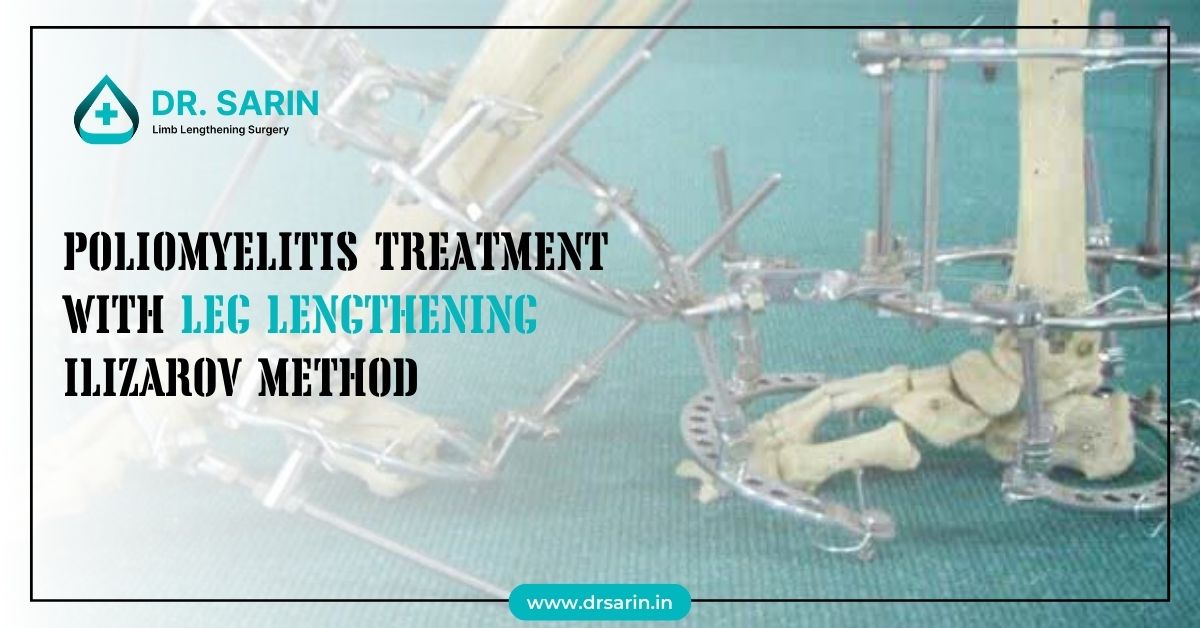Poliomyelitis, commonly known as polio, can lead to muscle weakness and paralysis. It often affects the legs and results in limb length discrepancies. The Ilizarov method, a specialized orthopedic technique, offers a poliomyelitis treatment option for correcting leg deformities and length inequalities caused by polio. This article provides an overview of the treatment for polio affected leg, including patient selection, operative techniques, post-operative management, and outcomes.
Patients and Methods
The Ilizarov method for treating poliomyelitis-induced leg deformities is typically considered for patients who have completed their growth and exhibit significant limb length discrepancies or deformities. Patient evaluation includes a thorough assessment of medical history, physical examination, imaging studies, and functional status to determine the suitability for surgery.
Operative Technique: Closed Method
The closed method involves using external fixation devices, such as the Ilizarov apparatus, to gradually lengthen and treat the polio-affected leg. The procedure may also include stabilizing the foot by arthrodesis, which involves fusing the joints to improve stability and function.
- Stabilization of the Foot by Arthrodesis: Various arthrodesis techniques may be employed, including tibio-talar joint arthrodesis, subtalar arthrodesis, and triple arthrodesis, depending on the specific deformities and functional impairments present.
Operative Technique: Open Treatment with Osteotomies
Open surgical procedures may sometimes be necessary to correct complex deformities or achieve desired limb alignment.
- V-shaped Osteotomy: This technique involves making a V-shaped cut in the bone to correct angular deformities and adjust limb alignment.
- Y-shaped Osteotomy: Like the V-shaped osteotomy, the Y-shaped osteotomy allows for greater flexibility in correcting deformities and achieving optimal limb alignment.
- Arthroereisis: This procedure involves inserting implants or wedges into the joints to stabilize and realign the foot and ankle, improving function and reducing pain.
Post-operative Management
Following surgery, patients undergo a comprehensive rehabilitation program aimed at maximizing function, reducing pain, and preventing complications. This may include physical therapy, occupational therapy, and assistive devices to support mobility and independence during recovery.
Results
The outcomes of Ilizarov treatment for treatment for polio affected leg vary depending on the severity of the deformities, patient factors, and adherence to post-operative protocols. Overall, the Ilizarov method offers a promising approach for correcting limb length inequalities and deformities caused by polio, improving affected individuals’ function and quality of life.
The Ilizarov method provides a valuable poliomyelitis treatment for addressing leg length discrepancies and deformities resulting from poliomyelitis. Through meticulous patient selection, precise operative techniques, and comprehensive post-operative care, orthopedic surgeons can help patients with polio achieve improved limb alignment, function, and overall well-being.




